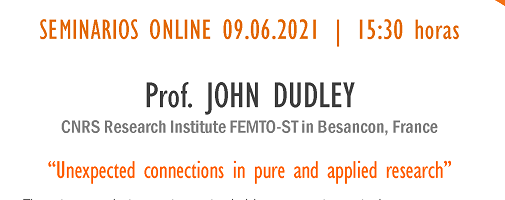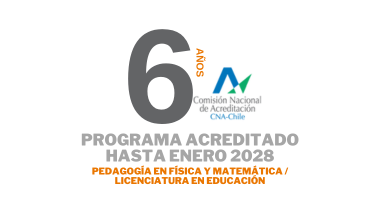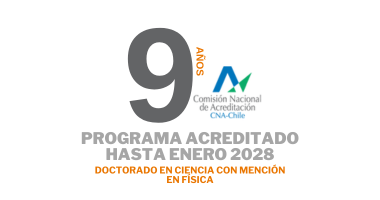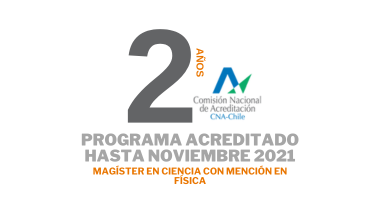Seminario de Física | Mi 9 de junio 2021 | 15.30 horas - Prof. John Dudley

There is currently intense international debate concerning optimal ways to manage interactions between fundamental and applied research. However, although there is sometimes a tendency to view this as a modern problem, the same issues have occurred frequently during the history of scientific development. This talk will review some particular examples from nonlinear science, discussing unappreciated aspects of research in nonlinear soliton physics, spanning the 19th century laying of the transatlantic cable, the Manhattan Project, the 2005 and 2009 Nobel Prizes in physics, the latest techniques in medical diagnostics and the detection of extra-solar planets. We will also see how these developments are leading to dramatic developments in nonlinear optics and fundamental advances in the understanding of nonlinear light - matter interactions, new approaches for ultrafast laser design, and leading to some surprising applications in other fields of physics. The talk will consider technical aspects of wave propagation and nonlinear photonics, but will be sprinkled with historical anecdotes and thus will be suitable for a general audience.
Biography
John Dudley is Professor of Physics at the CNRS Research Institute FEMTO-ST in Besancon, France. His research covers broad areas of optical science and he has published over 500 contributions in journals & conference proceedings and delivered over 120 invited talks at major conferences. He served as the President of the European Physical Society for a two year term from April 2013-March 2015. In 2009, he initiated and Chaired the International Year of Light & Light-based Technologies 2015 and he currently chairs the follow-up International Day of Light. He was awarded the Harold E. Edgerton Award of SPIE for 2019, and the OSA R. W. Wood Prize for 2020, recognizing his contributions to ultrashort pulse measurements, nonlinear fibre optics, and supercontinuum generation. He has won a number of other prizes and distinctions.






